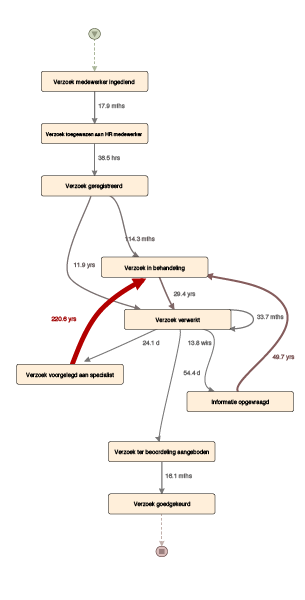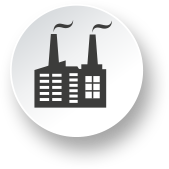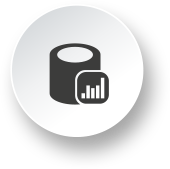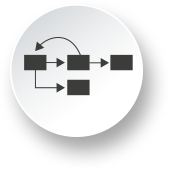
PROCESS MINING
For process mining we use the application Disco. A tool which objectively charts actual business and work processes based on log data. The order of process steps becomes visible, including throughput times. Unconscious, ‘hidden’ steps become visible, including when and where this step is triggered. Where does the process slow down and at which department slack is created?
PROCESS EXPERTS
The people ‘on the job’ in an organisation are the process experts and they know the ins and outs best. They expertly use the systems and know the details, exceptions, shortcuts and hiccups. Yet this information is subjective and not interpreted similarly by everyone. Ask five colleagues to draw the same process and you get five different maps… Traditionally processes were improved through ‘brown paper’ sessions: a – usually brown – paper on an empty wall, where post-its of different colours are stuck.
SMART ALGORITHMS
Nowadays a ‘brown paper’ session is like using mental calculation when a calculator is next to you. Human insight remains valuable, but, enriched with objective data and smart algorithms, results are vastly improved. This is het reason why we used process mining as the starting point of process improvement. What process mining is and why you must choose this is a starting point for an agile and effectively working organisation, becomes apparent in our pecha kucha.
WHICH SYSTEMS?
Validated data extraction is het basis for process mining and process improvement (sifting). The information systems determine how, and how easy a good set of event logs is obtained. Common systems usually simplify extraction. But as data scientists see less common systems and exotic custom-built solutions as a challenge. We have experience with most common information systems, as listed below. This gives us an excellent foundation to get our teeth into other systems. Do you have questions regarding specific information systems? Feel free to contact us!
KNOWN SYSTEMS
- SAP (S/4HANA, SD, MM, FI/CO, WF)
- MS Dynamics NAV (o.a. waste management, retail & transport solutions)
- MS Dynamics AX
- AFAS ERP
- Exact Globe
- Basware
- JD Edwards
- Oracle Health Insurance
- Event Business Management Software (EBMS)
- GreenSuite
- Nedap Healthcare
- Microsoft System Center Service Manager
- Planon
- ProcessRunner
- TOPdesk
- Service Manager
- Easyflex
- Basecone
- Salesforce/ServiceMAX
- FuelOffice
- Syntess Atrium

HOW DOES PROCESS MINING WORK?
Simplified we can divide process mining – the starting point of sifting – into four steps.
1. WHICH PROBLEM DO WE WANT TO SOLVE?
First, we define which work and/or business processes are to be investigated and why. Is efficiency the main focus, or should extra attention be given to compliance? Which processes are in scope; and what does your gut instinct say the main reason for sluggish progress or a faltering control is?
2. WHICH APPLICATIONS DO WE REQUIRE?
Next, the data sets for the processes in scope are considered. Which information systems play a role, and in which way can data be extracted? Different types of extractions are aligned in order to enable creation of event logs; the input for the process mining tool.
3. SMART ALGORITHMS FOR OBJECTIVE OBSERVATIONS
The tool Disco uses smart algorithms to show all properties of the process to be analysed: which steps follow one another, where are steps retraced or skipped, and what is the lead time of each step?
4. PROCESS VISUALIZED, INCLUDING DESIRE LINES
The analysis creates visual output on different levels of detail, not only showing het logical process, but also showing exceptions, detours and shortcuts used. Animations of het process flow show which routes and in what time orders move through a procurement process. The ideal basis for the next sift: effective Lean problem solving.



